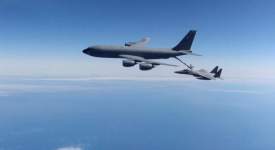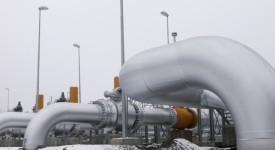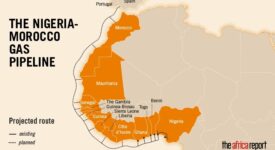Prof. Vladimir Hlasny (Ewha Womans University, Seoul, South Korea)
STATE OF ISSUE: CIVIL AND PROXY WARS — With the ninth largest petroleum reserves globally, Libya was well positioned to develop in the 2000s along the path of the resource-rich Gulf States. Indeed, years 2002-2010 saw massive growth in living standards, even despite economic mismanagement under Muammar Gaddafi’s take on socialist governance. The only interruption came during the global financial crisis and a dip in oil prices in 2009. Libya was poised to become the heart of the prospective United States of Africa, and a liaison between African countries and Europe. Instead, Libya imploded. Since 2011, a protracted civil war and the government’s continuous struggle to impose authority over the country’s large territory has lowered the prospects of economic development.
Ever since Muammar Gaddafi’s overthrow in 2011 by Western-backed opposition, Libya has been in crisis. Multiple militias have struggled for rule over the country and its rich offshore oil reserves. Through years of fraught transition and months of intensive UN-coordinated negotiations, the warring sides in Libya finally signed a Libyan Political Agreement, to form the Libyan Government of National Accord (GNA). However, the GNA, founded in 2016, lacked quick and brash action to complete the process of reunifying the country, and before long a renegade opposition Libyan National Army (LNA) under the command of General Khalifa Haftar challenged it. The renewed civil war has raged to this day.
CAUSES AND ANALYSIS: AUTHORITARIANISM AND ANARCHY — For decades Muammar Gaddafi oversaw a deeply centralized and clientelist system of an ostensibly socialist economy characterized by the concentration of political and economic power between selected groups and individuals tied to Gaddafi’s regime. The boundary between private and public ownership and control was blurred. This constrained the balanced and sustainable institutional capacity needed for economic development. The clientelist system left many socio-economic and demographic groups disgruntled. These groups responded to the region-wide calls for a political reawakening and started protesting the mismanaged status quo. After Gaddafi was toppled, the General National Congress (GNC) was elected in July 2012 to preside over the country’s transformation.
In these post-revolution years, Libyan authorities lacked a common national vision and were further weakened by the rise of local militias that polarized around the two rival camps. The whole society lacked independent social institutions that could help manage a peaceful and accountable transition. Disagreement over access to oilfields, and the use of infrastructure and resources contributed to the schism. The issue of control over oil production and over natural resource revenues was a key driver of the political impasse and of the involvement of foreign powers, as the Libyan economy continued on a downward spiral. That is when various actors started raising voices against the GNC, eventually leading to the rise of General Haftar’s LNA and the restart of the civil war.
ECONOMIC IMPACTS — As in much of the region, macroeconomic conditions (and thus political and humanitarian conditions as well) are closely tied to the developments in the oil sector and the global oil prices. Libya relies greatly on petroleum sales, which account for approximately 95% of export revenues and more than one-half of national income. This dependency on raw resource exports makes the economy vulnerable to production shocks and uncertainty. The sabotage of production sites and pipelines during the military conflict between the GNA and LNA has caused significant fluctuations and declines in oil exports, and hence government revenues. While the warring factions occasionally signed ceasefires, and agreed to a fair distribution and non-military use of oil revenues, few mechanisms enforced such deals, and their impact was not long-lived.
The GNC was able to regain some control of the oil industry and restore production starting from the end of 2011. However, in the spring of 2013, the country was hit again by a double shock of frequent shutdowns of its oil fields, and a struggle between the two governments, making it difficult for the National Oil Corporation to export oil. In January 2015, the international price of oil collapsed by over 60%. As the fight over oil supremacy continued through 2013–2016, oil production in Libya stood near 385.000 barrels per day (bpd), a far cry from the pre-Arab Spring level of 1800bpd. Only starting in July 2017, oil production jumped to 1200bpd and further gradually increased toward 1600bpd, before collapsing this year to near zero amidst the global onslaught of the COVID-19 epidemic.
Through much of the past decade, business and consumer confidence, and popular trust in general, were declining. Foreign investors fled Libya. The government has faced a large deficit in the balance of payments, dwindling foreign exchange revenues, and ballooning sovereign debt. Under the credit squeeze, public capital spending fell drastically compared to its pre-revolution level (in favor of paying public-sector and army wages), when it used to be among the highest in the Arab region. This has resulted in the gradual depletion of the national infrastructure and productive base further shrinking the capacity of the state and of the economy to rise back up on their feet, shore up production, and provide decent employment.
Among the population, the sequence of conflicts that has stretched in various forms for nearly a decade has claimed many casualties in terms of lives, human rights and freedoms, and economic livelihoods. Over half a million Libyans (or 10%) have become displaced or seeking refuge. About one third of Libyans currently live beneath the poverty line, and this is rising under COVID-19 to over one half of the population. Three quarters of Libyan households across the country are reportedly facing deterioration of their income, due to delays in salary payments and difficulties in accessing cash due to significant disruption in banking and credit services. Livelihoods of migrant workers and of the bulging youth generation have been particularly impaired – even before COVID-19 – due to declining job opportunities resulting from falling oil prices, paralyzed government services, and dwindling foreign and domestic investment.
A decade ago, in a vibrant labor market offering jobs at all skill levels, 40% of the Libyan labor force consisted of foreign migrants who were an important source of the country’s unskilled workforce. Since then, as the number of opportunities and compensation shrank, nearly the same number of foreigners left Libya, leaving unskilled jobs unfilled. Many skilled Libyan nationals were forced to accept low-skill jobs, particularly as formal establishments shut down or downsized, and informal economy sprung up offering low-quality, precarious jobs. Meanwhile, the country’s social safety net has been porous, and tax administration has been characterized by poor capacity to collect revenues and weak compliance culture, even by the weak regional standards. To sum up, Libya has become a failed state.
FUTURE EXPECTATIONS AND IMPLICATIONS — The economic situation in Libya is stark, and the political and social climate – even more so than in the rest of the region and globally – gives little hope for a quick recovery. The two key elements of a traditional state – the monopoly on the use of force and the collection of taxes – are absent in Libya. Public services – including security and social protection – are inadequate and inefficient. Transparency International’s Corruption Perception Index (CPI) ranks Libya’s public sector as corrupt.
The military operations around Tripoli that started in summer 2019 have cut short the best attempt at an economic revival in a decade. The outbreak of COVID-19 in Libya and in the region has wreaked havoc on Libya’s already diminished capacity for production and sustenance. The recurrent oil supply shocks coupled with the fall in global oil prices raise concerns over the country’s macroeconomic prospects. Against this background it has been estimated that a sustained growth of over 6% per year would be needed to reduce youth unemployment to manageable levels.
The prospects for the coming months are dim. The re-emergence of COVID-19 across Europe in July continues to disrupt tourism and demand for Libyan agricultural commodities and textiles, at the same time holding back the delivery of raw materials and capital equipment. The ever-changing political landscape adds to the uncertainty over property rights, access to markets, and availability of banking and credit services. While the renewed prospect of peace gives hope that state and financial institutions will resume their functioning, even this peace comes on the heels of violence and simmering resentments that spell trouble for the prospects of national unity, solidarity and political consensus.
Any future government will have to work on consolidating control over the large country, delivering stability, and responding decisively to the COVID-19 emergency. To put the country back on the growth trajectory, the dominant public sector, which employs some 85% of the active labor force in the Libyan economy, will have to be reformed from scratch and organized, foreign investment will have to be encouraged with proper guarantees, and economic sectors will have to be fiscally primed. Subsidy reform is warranted. A clear vision and policy that defines the nature, mandates and roles of the country’s governance should be a founding stone. The silver lining is that Libyan population is skilled and relatively well educated, and is poised to help with national reconstruction. Civil society groups have risen from the ashes or have newly emerged in Libyan cities, and are now actively delivering services and aid to those most impoverished. The newly independent media have ushered in transparency and accountability. These institutions, and the energized citizens who work with them, are the greatest assets of the troubled Libyan state.







